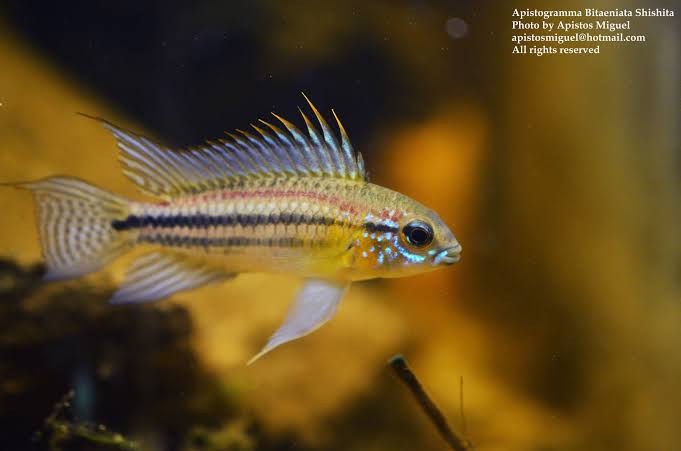APISTOGRAMMA BITAENIATA SHISHITA Pair
Guarantee Safe Checkout
Apistogramma
✅ Size: 4cm young
Apistogramma is a large genus of freshwater fish in the family Cichlidae native to South America, but also commonly kept in aquariums. They are dwarf cichlidsthat mostly feed on tiny animals and have breeding behaviors that vary depending on the exact species
Apistogramma are exclusively found in tropical and subtropical South America in the lowlands east of the Andes. The highest richness is in the western Amazon Basin and Orinoco Basin, but there are also species in the Guianan Shield, eastern Amazon Basin, rivers flowing into the Atlantic in northern Brazil (Tocantins–Araguaia to Parnaíba) and the Río de la Plata Basin.[1][2][3][4] Although a few species are widespread, most members of this genus have small ranges.[4][5] Few members of the genus have been evaluated by the IUCN, mostly either ranking as least concern (not threatened) or data deficient (limited available data prevents an evaluation), but some of the highly localized Apistogramma species likely are threatened.[5][6][7] Primary threats to their survival are deforestation (causing changes in their microhabitat) and pollution (for example by oil drilling or mining).[6][7]
Apistogramma generally inhabit streams, or edges of rivers or lakes.[2] Most prefer sheltered habitats with leaf litter on the bottom in water with little movement and a shallow depth, up to about 40 cm (1.3 ft), although a few species occur deeper, in fast-flowing water, in more open habitats or at the surface among floating plants.
Apistogramma are omnivores, but tending towards micropredatory. Their main food items consist of aquatic insect larvae and other small invertebrates, fish fry, algae and plant debris.[2][9]
Brood care is highly developed, as in most cichlids. Nearly all Apistogramma species spawn in crevices (small caves), typically in holes in sunken logs or branches, or in leaf litter aggregations. A number of breeding strategies exist in the genus. Some species breed in polygamous harems, while other species form monogamous pairs.[2] Three of the described species, A. barlowi, A. megastoma and A. pantalone, practice mouthbrooding, either by both parents or only by the female.[15][16] In most cases, regardless of the breeding strategy, the female is more highly involved with care of the eggs and fry, whilst the male defends a territory from predators.[2] The sex of the fry is affected by the water conditions: In all species where it has been studied warmer water results in more malesand in some species more acidic water (lower pH) also results in more males.
- Water Conditions: 72-86° F, KH 2-15, pH 6.0-7.0
- Maximum Size: 2.5" - 3"
- Diet: Carnivore
- Minimum Tank Size: 20 gallons
Limited Quantity Available - Will Sell out Fast!
Note:
We can’t ship Livestock and Live Plants to WA and TAS due to State Restrictions. Kindly check out our DOA and other policies before purchase!!
What to Expect from Us
All Aquatic plants and animals come with a 100% live arrival guarantee!!

| Size |
1 pair |
|---|






